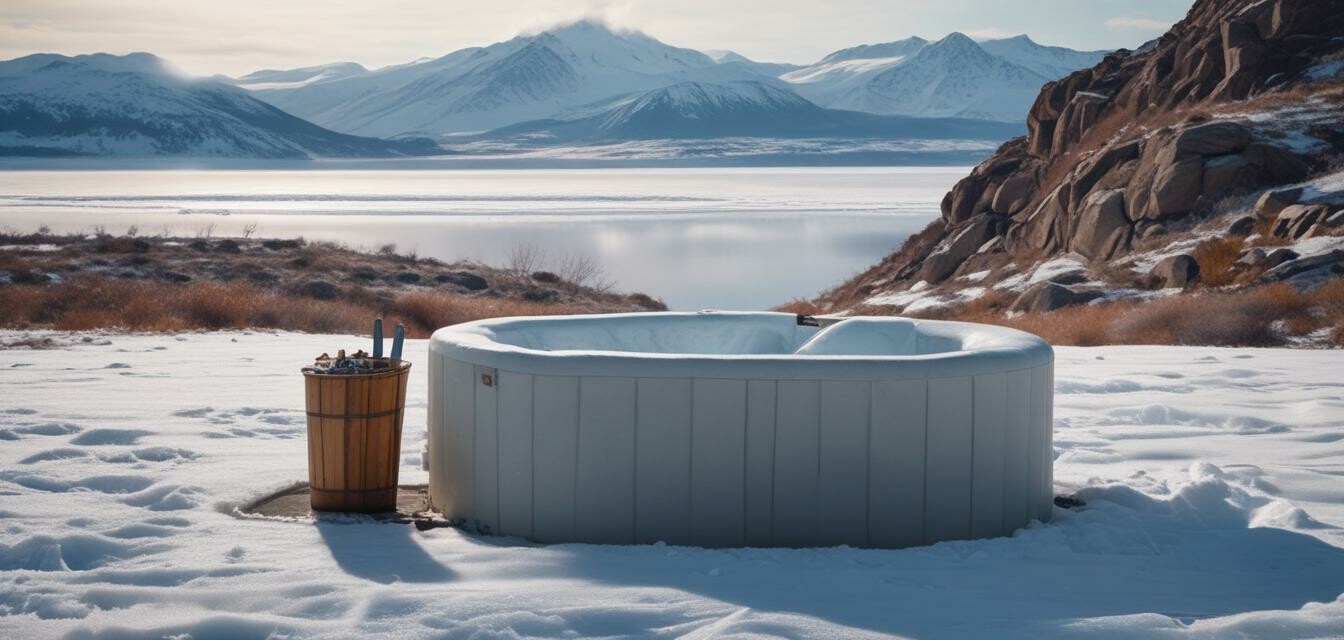
How climate affects ice bath practices
Key Takeaways
- Different climates require unique adaptations for effective ice bath practices.
- Cold climates may benefit from natural ice sources, while warm climates need effective cooling solutions.
- Understanding environmental effects can maximize recovery sessions.
- Variety of configurations can be used to enhance adaptability.
- Proper temperature control is paramount for effectiveness.
Ice baths have gained popularity among fitness enthusiasts and individuals looking for an effective recovery solution. However, did you know that the climate you live in can significantly impact your ice bath practices? This article delves into how different environments affect ice bath setups and practices, the adaptations needed for extreme temperatures, and tips on optimizing your recovery sessions.
Understanding the importance of climate in ice bathing
Climate plays a crucial role in how you can set up and utilize your ice bath. Variations in temperature, humidity, and natural resources all factor into the effectiveness and feasibility of ice bath sessions. From frigid arctic winds to sweltering tropical heat, understanding your climate can elevate the efficacy of icy recovery techniques.
How climates differ
There are generally three climate categories that impact ice bath practices:
- Cold climates: Regions where temperatures frequently drop below freezing, often surrounded by snow and ice.
- Temperate climates: Areas that experience seasonal variability with warm summers and cold winters.
- Tropical climates: Hot regions with little temperature variation throughout the year.
The impact of different climates
Cold climates
In cold climates, ice baths can be conveniently simplified. Natural ice can often be sourced from the environment, making it easier to fill a bath with cold water. However, there are some considerations:
| Adaptation | Consideration |
|---|---|
| Utilizing natural ice | Ensure the ice is clean and free from contaminants. |
| Temperature control | Monitor temperature accurately to maintain effective cold exposures. |
| Shelter | Create a windbreak to maintain the desired water temperature. |
Temperate climates
Temperate climates offer the best of both worlds, transitioning between hot and cold. Here are some adaptation strategies for those experiencing seasonal changes:
- Monitor seasonal temperature fluctuations for optimal ice bath timing.
- Invest in insulation and covers to maintain cold water temperature.
- Utilize portable cooling systems during warmer months.
Tropical climates
In tropical climates, maintaining a cold ice bath can be challenging due to consistently warm temperatures. Here are some suggested adaptations:
Tips for tropical climates
- Implement ice makers or cooling units to maintain cold temperatures.
- Consider using ice packs to supplement bath temperatures.
- Choose a shaded area to set up your ice bath to minimize heat exposure.
Maintaining effective ice bath practices
No matter your climate, effective ice bath practices require attention to detail and adaptability. Here are additional strategies to ensure the best results:
- Consistently check water temperatures using accurate thermometers and temperature control devices.
- Research guides on purchasing equipment tailored to your environment.
- Connect with local fitness communities or forums for climate-specific advice and support.
The role of technology in ice bath adaptations
With advancements in technology, many new solutions are available that make it easier to adapt ice bath setups to various climates. Innovations in cooling technology, portable ice-making devices, and besser insulation materials play a significant role. Let's take a look:
| Technology | Benefits | Ideal For |
|---|---|---|
| Cooling units | Maintain desired temperatures consistently | Tropical climates |
| Insulating covers | Reduce temperature loss during exposure | Temperate and cold climates |
| Portable ice makers | Produce ice quickly for immediate use | All climates |
Investing in quality cold therapy gear suited to your environmental conditions can yield effective recovery results.
Conclusion
The climate you live in significantly influences your ice bath practices. Understanding how each environment affects your recovery sessions allows you to optimize the use of ice baths effectively. Whether you live in a cold, temperate, or tropical region, adapting to your climate will ensure that you're getting the most out of your personal recovery practices.
Pros
- Enhanced recovery techniques tailored to your climate.
- Access to natural resources for ice baths in cold regions.
- Technological advancements improving maintenance and effectiveness.
Cons
- Higher costs for cooling solutions in tropical areas.
- Potential for inconsistent water temperatures in temperate zones.
